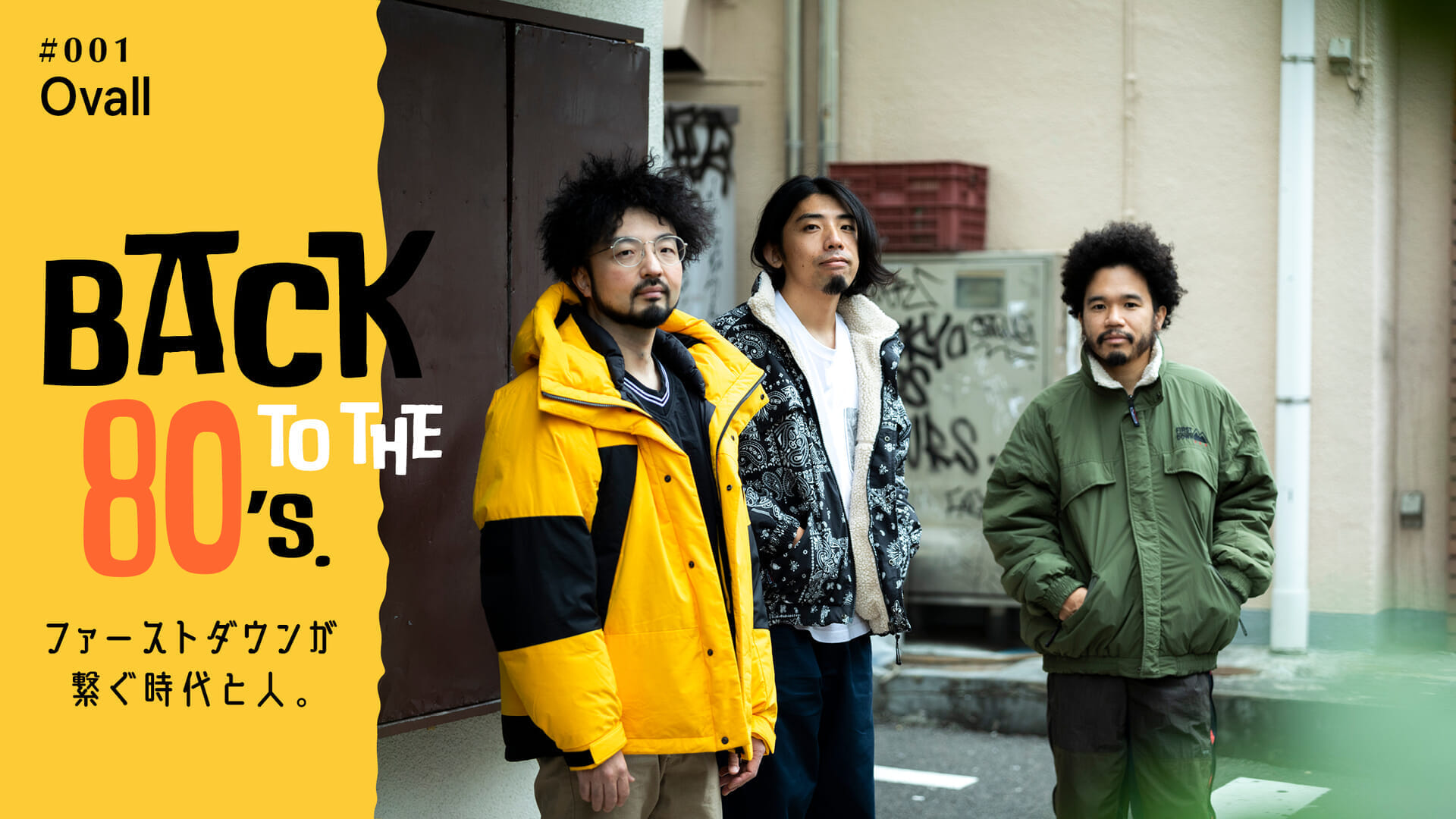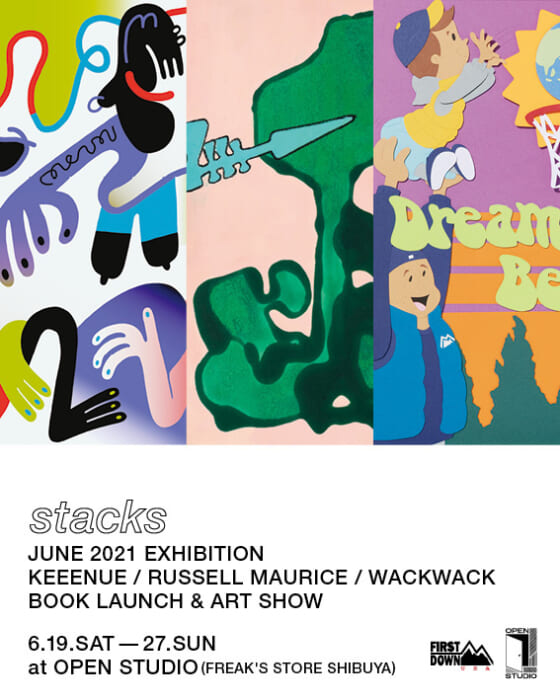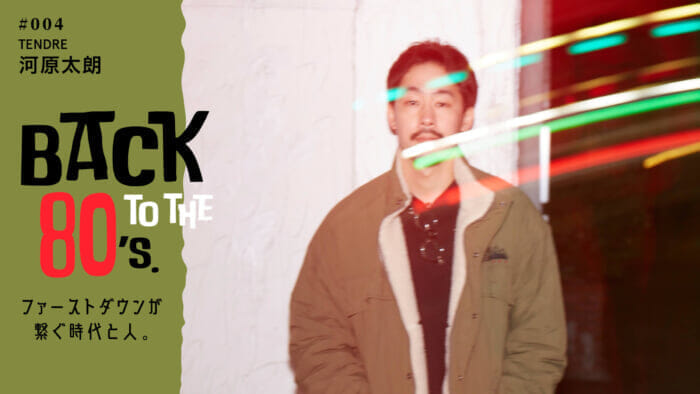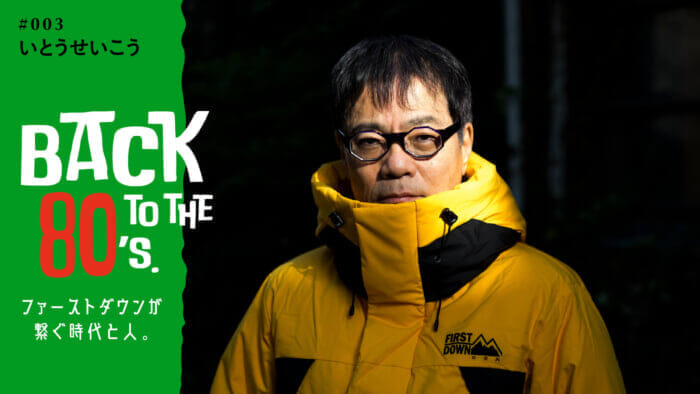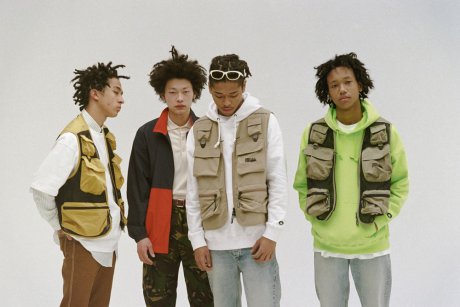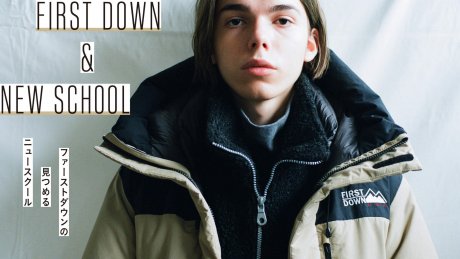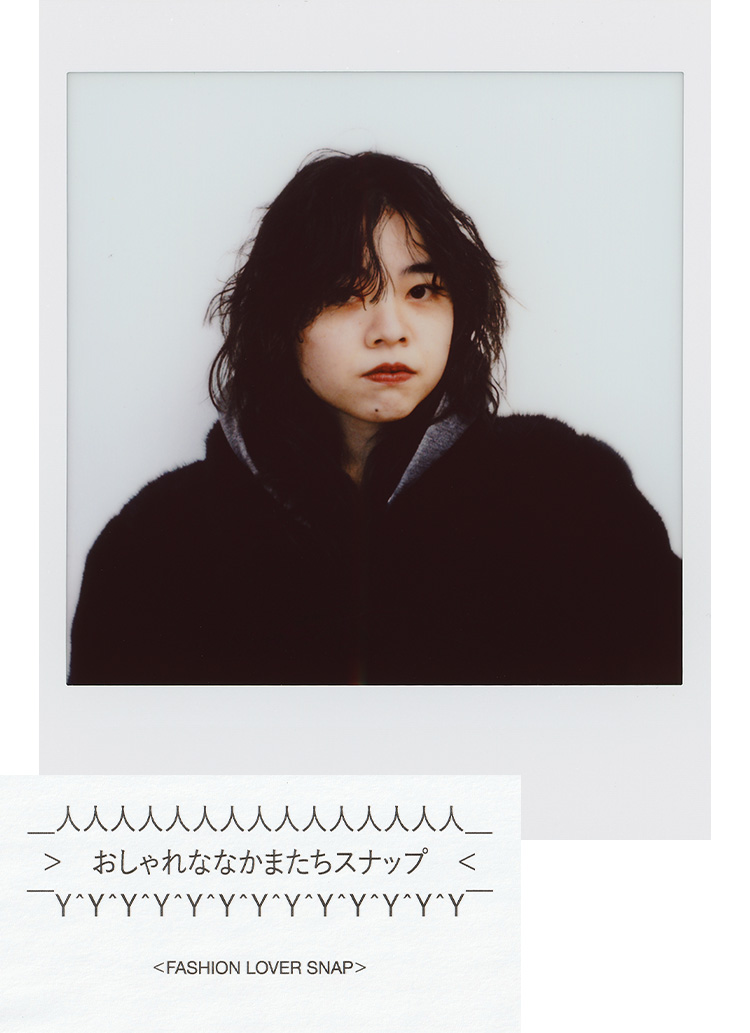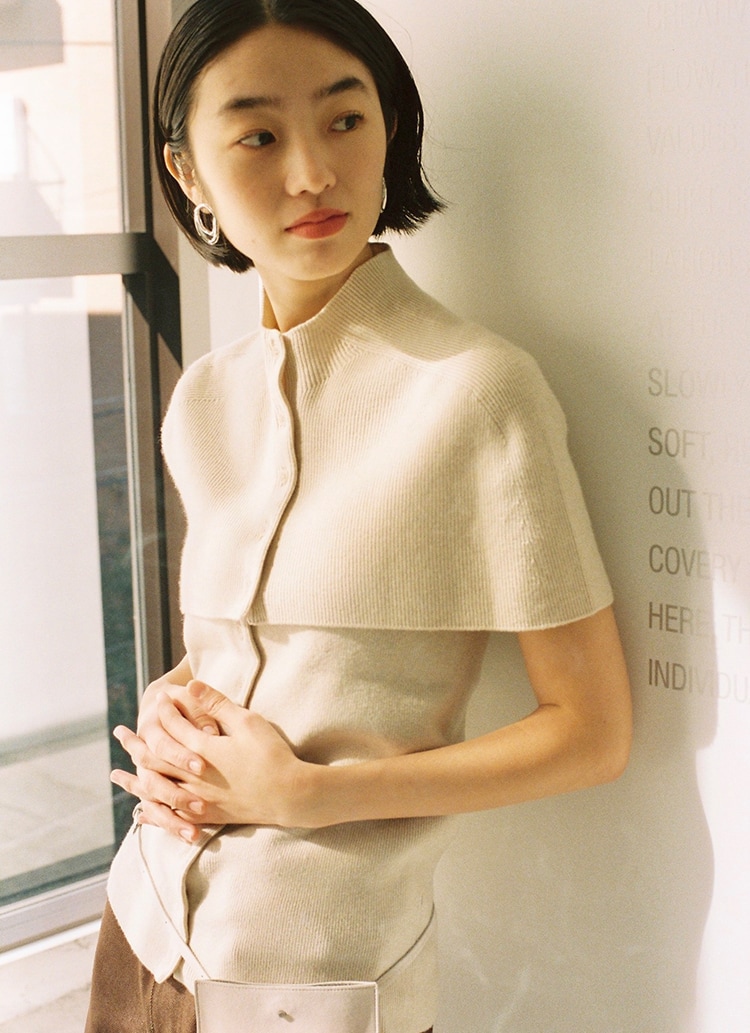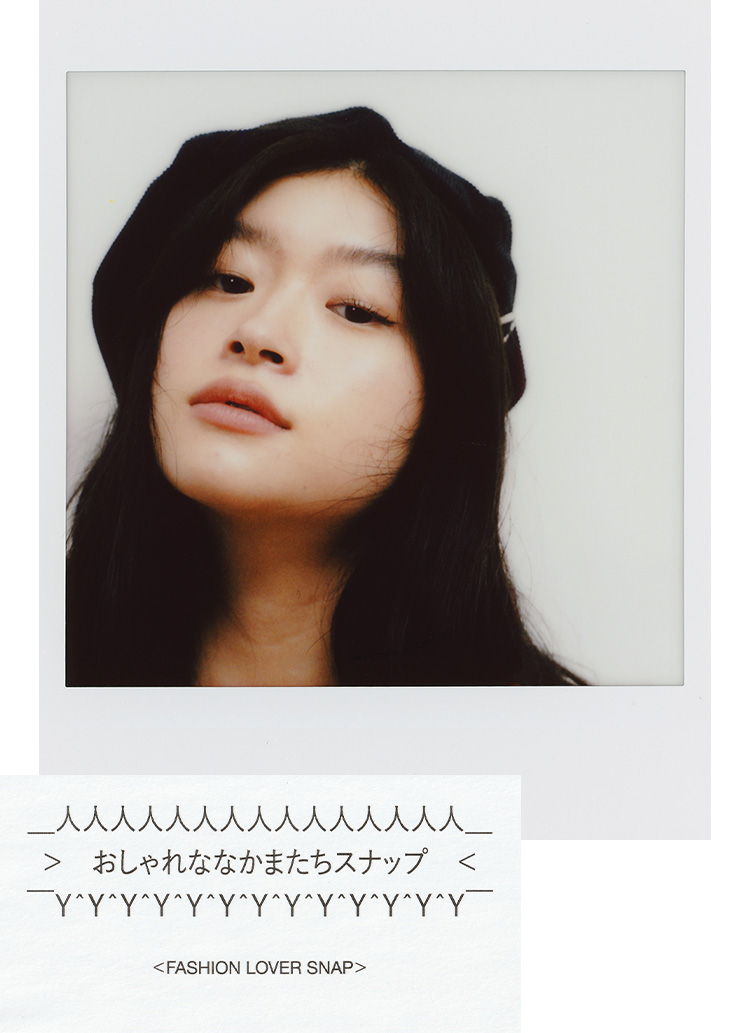Down jackets are a hip-hop style of
What do you associate with the 80's outside of music?
Sekiguchi: When I was a college student, I had a lot of time on my hands, so I often went to museum exhibitions. At that time, I fell in love with Basquiat, Keith Haring, and other so-called pop art. Before that, I had started with Monet, Renoir, and other royal paintings, and I also saw religious paintings, but I came into contact with what is called Pop Art in the same vein, and I felt familiar with it, thinking, "I can see this in the same vein. I really liked that sense of freedom.

MABANUA: I built a house last year. I did a lot of research on architecture and found that houses and buildings built in the late 70s and early 80s are very good. There is no waste before fashion, but they are sophisticated and cool. There are many buildings that are both lean and aggressive. But in Japan, buildings built around that time are being torn down due to aging.
Sekiguchi: If we don't leave it behind, the streets will start to look the same everywhere.
MABANUA: On the other hand, there are architects who renovate, but personally, I find many of today's buildings disappointing. Isn't there a lot of glass design these days?
I think it's a little bit more unified, with a little bit of greenery.
MABANUA: Yes, that's right. In the dressing room of Ajisen Universe in Osaka, there was a photo display of the interior of a cabaret at that time. The decorations looked like something out of "Blade Runner. At Disneyland, I really liked the area around Space Mountain, including the cafeteria. But when I told my wife about it, she didn't understand it at all (laughs).
It's often compared to a car, but it's hard to find a hybrid that has the same old design but the latest specs on the inside.

Suzuki: The equivalent in music is software such as Pro Tools. It is now possible to create music on a computer, and even reproduce old sounds digitally without using instruments from the 80's and so on. It is convenient in terms of cost, maintenance, and various other aspects, as well as broadening the range of expression.
MABANUA: The hardest time for the music industry was in the late 1990s. Analog equipment became obsolete, and the sound quality was at its worst when digital equipment such as Pro Tools began to be used to create music on PCs. Nowadays, it is getting better, and it is possible to create everything from old-fashioned sounds to sophisticated sounds that sound like today's music on a desk. The J-pop of the late 90s was musically interesting, but the sound was just too thin.
Sekiguchi: The evolution of equipment doesn't necessarily coincide with the way music is transmitted.
Suzuki: Yes, in the 90s, Japan and the West became closer, and I think there was a desire to catch up from the part of the world that had been making music out of admiration, but as time progressed, they began to go at the same time, as they are doing now.
I think this is very typical of Ovall, with black music at its core and elements of both current and old music. By the way, what kind of musical image do you associate with down jackets?
Sekiguchi: In terms of image, I guess I would say hip-hop. The one that comes to mind right now is Run DMC.

MABANUA: Or Method Man or Wu-Tang Clan. But the first time Down Jacket made an impression on me in real time was the music video for "Deep Impact" that Dragon Ash and Rappagarya did together. (while watching YouTube) This is it! They were fluffing up their light blue shiny down jackets.
All: laughing hard (single person)
Suzuki: As for hip-hop in the 80's, I imagine people wearing Adidas Superstars or Ultrastars and down jackets or track jackets. What I think is interesting is that in the 2000's, the silhouette became more luxurious and slim, but in the 80's and 90's, there was a sense that being big was justified. Nowadays, any size is cool, but I think down jackets are still and will always be a hip-hop style.

A down jacket brand born in the U.S. in the 1980s, the brand rapidly gained acceptance among young people who loved music and fashion in the 1990s, and grew to become an iconic New York brand. The first collection was a collection of fashionable, globally renowned pieces. The first collection is a lineup of FIRST DOWN's standard models, centering on the bubble down jacket with its distinctive tape and reversible design, which was the original inspiration for a certain world-famous street brand. Not only are these jackets reissued, but the silhouettes have been updated with a modern and urban look.


